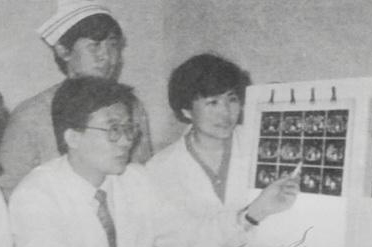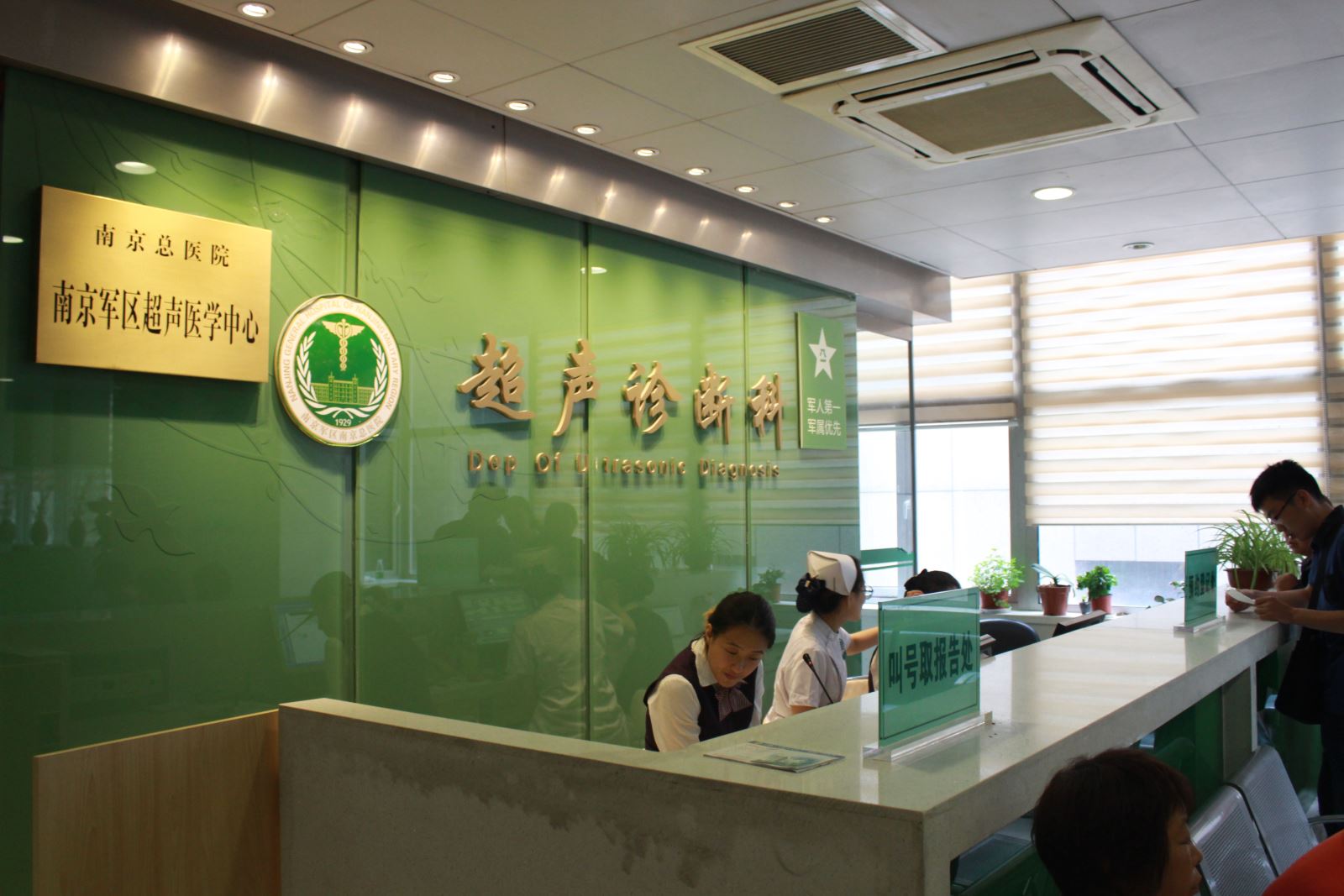As the current largest scale ultrasound department in Jiangsu province, the Nanjing General Hospital’s Ultrasound Department took the lead domestically in 2004 in importing ultrasound imaging technology. Department Chairman Yang Bin frequently told young doctors: “Your prospects are vast.” To this ultrasound specialist who has worked in medicine for over 30 years, ultrasound medicine has already gone through four revolutions, and the fifth one has just arrived.
“At first we only worked half day shifts”
In 1986 when the Nanjing General Hospital built its ultrasound department, ultrasound doctors were all transferred from various clinics and departments. The examination equipment was also relatively scarce. The CT and ultrasound machines were valuable property of the hospital.

▲ The medical equipment conditions of the 1980’s were limited. All ultrasound equipment was black and white ultrasound.
“Back then there was a very small diagnostic range. All patients had to do liver, gallbladder, pancreas, and spleen examinations on an empty stomach. As a result ultrasound doctors only worked in the mornings.”
Though they only worked half days, they received many patients. One ultrasound machine would scan over 100 people in one morning. Chairman Yang Bin remembers that the resolution of the ultrasound probe back then was not very high, and yet the probe was very heavy. “We had to switch between two and three doctors each morning, otherwise they couldn’t move it.”

Later on, imported color Doppler ultrasound equipment began entering Chinese hospitals. Ultrasound applications were no longer limited to abdominal organs. Doctors could also conduct blood vessel and heart examinations. From then on ultrasound doctors said goodbye to the age of half day workdays. “This was a historical breakthrough. We truly got hold of an appropriate weapon.”
“Our member already surpasses that of imaging doctors”
In the 1990’s the three top hospitals in the country began popularizing the use of color Doppler ultrasound equipment. The non-invasive advantages of ultrasound made it gradually replace DSA (Digital Subtraction Angiography) to become a frequently used method for cardiac examinations, and thereby completing the second revolution.

After the year 2000, ultrasound contrast agents brought ultrasound into its third historical stage. Hospitals around the country began truly forming independent ultrasound departments, and from which emerged a batch of leaders in the field.
▲Nanjing General Hospital’s ultrasound department currently has technologies including ultrasound contrast, ultrasound intervention, thyroid ultrasonic elastography, prenatal system ultrasound screening, and an automatic full volume breast imaging system.
Multiple technologies including elastography, ultrasound intervention, puncture navigation, and cavitation therapy were comprehensively launched beginning at that time. The number of ultrasound doctors also vastly exceeded that of imaging doctors. Ultrasound medicine completed its fourth revolution, and entered into a period of rapid development.

▲ Ultrasonic guidance can be used in precise puncture diagnosis and interventional therapy.
Looking at the previous four revolutions in ultrasound medicine the power of technology has continuously driven the advancement of the discipline. The transformations that ultrasound technology have brought to the fields of diagnosis, treatment, and scientific research have already benefited all clinical departments.
“We are the first to discover illnesses. Then what?”
The moment with the most sense of accomplishment for an ultrasound doctor is discovering the focus of an infection during a normal examination, and allowing the patient to receive treatment in a timely manner. Chairman Yang Bin proudly said: “We are the first to discover illnesses!”
▲ Two chinese ultrasound doctors examining a patient
As humanity’s front line position for blocking illnesses, the development of ultrasound medicine can not be separated from the wholehearted cooperation of doctors and the technical team.
Yang Bin has recently collaborated with Nanjing University, and used VINNO ultrasound machines to launch a research project that collected clinical data through the open RF platform, and moreover initiated an analysis, providing a more accurate assessment for the preliminary and prognostic diagnosis and treatment of patients.

▲ VINNO Ultrasound’s distortion free original RF data makes scientific research more convenient
Over the past 30 years countless ultrasound specialists and national ultrasound brands have driven the development of Chinese ultrasound medicine, and have never stopped. Yang Bin is full of confidence for the future of the industry. In one respect, future ultrasound microbubble technology can achieve imaging on the order of microns. When it comes to targeted therapy its function might be better than that of magnetic resonance. In another respect, he believes that in the not too distant future the appearance of ultrasound robots will give rise to the “fifth revolution”, and bring even more possibilities to ultrasound medicine.





